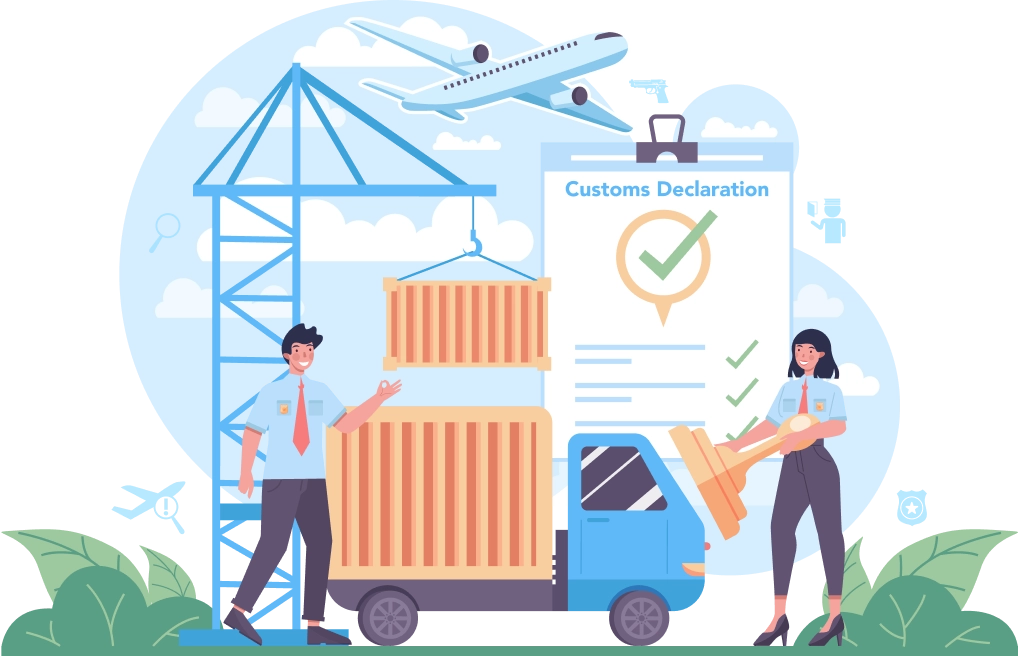U.S. Customs and Border Protection
U.S. Customs and Border Protection (CBP) is a crucial federal law enforcement agency operating within the U.S. Department of Homeland Security (DHS). Its primary mission is to protect the United States and its citizens by enforcing customs and immigration laws, as well as safeguarding the country from a range of threats, including terrorism, drug smuggling, and illegal immigration. Here is a more detailed overview of CBP mission, responsibilities, components, operations, technology, infrastructure, international partnerships, challenges, community engagement efforts, and budge

Mission and Responsibilities:
Border Security:
CBP central responsibility is securing the nation's borders, including land, air, and sea borders.
Trade Facilitation:
CBP manages and facilitates international trade and commerce while ensuring that goods entering and leaving the U.S. comply with applicable laws and regulations.
Immigration Enforcement:
CBP enforces immigration laws by inspecting individuals and vehicles at ports of entry and patrolling the borders to prevent illegal immigration.
Counterterrorism:
CBP plays a crucial role in preventing terrorists and their weapons from entering the country.
Drug Interdiction:
CBP works diligently to detect and prevent the smuggling of illegal drugs and contraband across U.S. borders.
Travel and Tourism:
CBP manages the entry and exit of travelers, ensuring that legitimate visitors are processed efficiently while identifying potential security threats.
Components
CBP is organized into several major components, each with specific responsibilities
U.S. Border Patrol (USBP):
USBP is responsible for patrolling and securing the border between official ports of entry, monitoring and apprehending individuals attempting illegal entry.
Office of Field Operations (OFO):
OFO manages the ports of entry, inspecting travelers and cargo while facilitating legitimate trade and travel.
Air and Marine Operations (AMO):
AMO provides air and maritime surveillance, interdiction, and enforcement capabilities.
Trade
Office of Trade Relations:
Works closely with the trade community to ensure compliance with import/export regulations.
Office of Intelligence and Analysis (I and A):
Collects and analyzes intelligence to support CBP mission.
Cargo Systems Program Office:
Oversees the Automated Commercial Environment (ACE) system, facilitating cargo processing.
Office of Professional Responsibility (OPR):
Conducts internal investigations and ensures the integrity of CBP personnel.
Operations
CBP conducts various operations and initiatives to fulfill its mission. Some notable examples include
Operation Hold the Line:
Focused on border security in Texas.
Operation Gatekeeper:
Focused on border security in California.
Global Entry:
A trusted traveler program that expedites customs processing for pre-approved, low-risk travelers.
Operation Rio Grande:
Aimed at addressing illegal immigration and drug smuggling in the Rio Grande Valley.
How does it help importers/exporters?
U.S. Customs and Border Protection (CBP) plays a vital role in facilitating international trade and commerce by providing a range of services and support to importers and exporters. Here is how CBP helps importers and exporters
Customs Compliance:
CBP ensures that imported and exported goods comply with U.S. laws and regulations. This includes verifying the accuracy of customs documentation, tariff classifications, and valuation of goods. Importers and exporters can rely on CBP to help them understand and adhere to these requirements, preventing costly delays and penalties.
Trade Facilitation:
CBP manages and streamlines the customs clearance process for legitimate trade. It operates programs like the Automated Commercial Environment (ACE) and the Automated Export System (AES) to expedite the processing of cargo, reduce paperwork, and enhance trade efficiency. These systems enable importers and exporters to submit electronic filings and receive real-time updates on their shipments.
Trade Consultation:
CBP Office of Trade Relations collaborates with the trade community, including importers and exporters, to address concerns, provide guidance on regulatory compliance, and facilitate trade. They offer guidance on trade-related issues and can help resolve disputes or inquiries.
Risk-Based Inspections:
CBP employs risk-based targeting and inspections to identify high-risk shipments, allowing low-risk cargo to move quickly through ports of entry. Importers and exporters who meet certain criteria, such as participating in trusted trader programs like the Customs-Trade Partnership Against Terrorism (C-TPAT), can benefit from expedited processing and reduced inspections.
Trade Enforcement:
CBP protects American businesses and consumers by enforcing intellectual property rights and trade remedy laws. This helps safeguard against counterfeit goods and unfair trade practices that can harm importers and exporters.
Pre-Clearance Programs:
CBP offers pre-clearance programs at select foreign airports, allowing U.S.-bound passengers and cargo to undergo customs and immigration inspections before departing their home countries. This streamlines the arrival process and reduces wait times for importers and exporters.
Trade Incentives:
CBP administers programs that provide certain benefits to importers and exporters, such as duty drawback and duty-free treatment for specific goods under free trade agreements (e.g., NAFTA, USMCA). These incentives can reduce costs for businesses engaged in international trade.
Education and Outreach:
CBP conducts outreach and training programs to educate importers and exporters about customs procedures, compliance requirements, and changes in trade regulations. This helps businesses stay informed and make informed decisions.
24/7 Support:
CBP operates 24/7 at major ports of entry, ensuring that importers and exporters can access customs services and assistance at any time, including weekends and holidays.
Overall, CBP efforts in ensuring customs compliance, streamlining processes, providing trade incentives, and offering support and resources help importers and exporters navigate the complexities of international trade more efficiently, reduce costs, and enhance their competitiveness in the global marketplace.